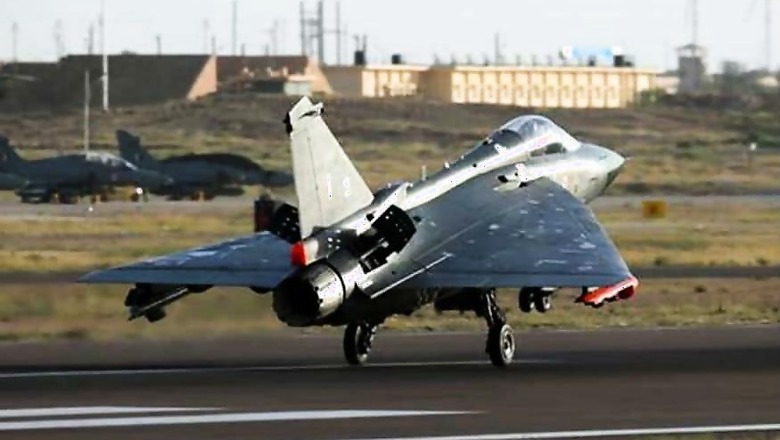
views
Over three decades in the making, the Light Combat Aircraft Tejas is making a low profile entry into the Indian Air Force with a modest two fighters forming the first squadron. The numbers will go up slowly but steadily, Hindustan Aeronautics has promised, with four more joining the fleet this year and eight the next (total 20 fighters to a squadron).
But looking ahead, the IAF brass is hoping Hindustan Aeronautics will deliver the Mark 1A configuration of the Tejas in 2019. This is an improved variant with all the "bells and whistles" the men in blue want: AESA (Active Electronically Scanned) Radar, Unified Electronic Warfare Suite, Mid-Air Refueling and the ability to fire BVR (Beyond Visual Range) Missiles. It will also have a better engine: The GE-F414 (the current engine is the F-404).
Is the Air Force happy? As a senior retired air force officer told CNN News18: "Given the fact that we are down to 33 squadrons with more fighters to be phased out over the next few years, anything we get which adds to our strength is fine."
The Tejas is not the best fighter in its class, other retired air force officers say. It reflects a persistent view among many in the air force that India could have done better by just buying up a foreign fighter of the similar or same class. The air force would have got a tried and tested fighter.
The view is common among pilots but ignores the point that the LCA is adequate replacement for the MiG-21 fighters that are being phased out. It also ignores another vital point, that India cannot keep importing aircraft.
The Tejas, in that sense, while it has a foreign engine, Israeli radar and weapons and British ejection seat, also incorporates considerable Indian technologies like the fly-by-wire system which gives computer-controlled inputs to charter the flight of the aircraft; the Mission Computer which processes data provided by sensors; and locally developed carbon fibre composites which are light-weight and ultra-strong alternatives to metal.
Other systems include fuel management to steering of the nose-wheel. The Tarang Warning Radar lets the pilot know if enemy aircraft or surface-to-air missiles are in the vicinity.
Even better, it has given the Indian aerospace community the confidence to embark on the even more ambitious Advanced Medium Combat Aircraft (AMCA) project, which will build on the Tejas.
Last December, the US signaled to Defence Minister Manohar Parrikar that it would be willing to transfer jet engine technology to India. The engine in question is the GE-F414S6 which will power the Tejas Mark1A; but what India is looking at is the F-414 Enhanced version which reportedly, will deliver an awesome 220 KiloNewtons of thrust (against 110 KiloNewtons at present).
Of course, all this is in the future. For now, let’s just toast the Flight of the Tejas!
(Surya Gangadharan is a veteran journalist, defence and strategic affairs expert.)


















Comments
0 comment